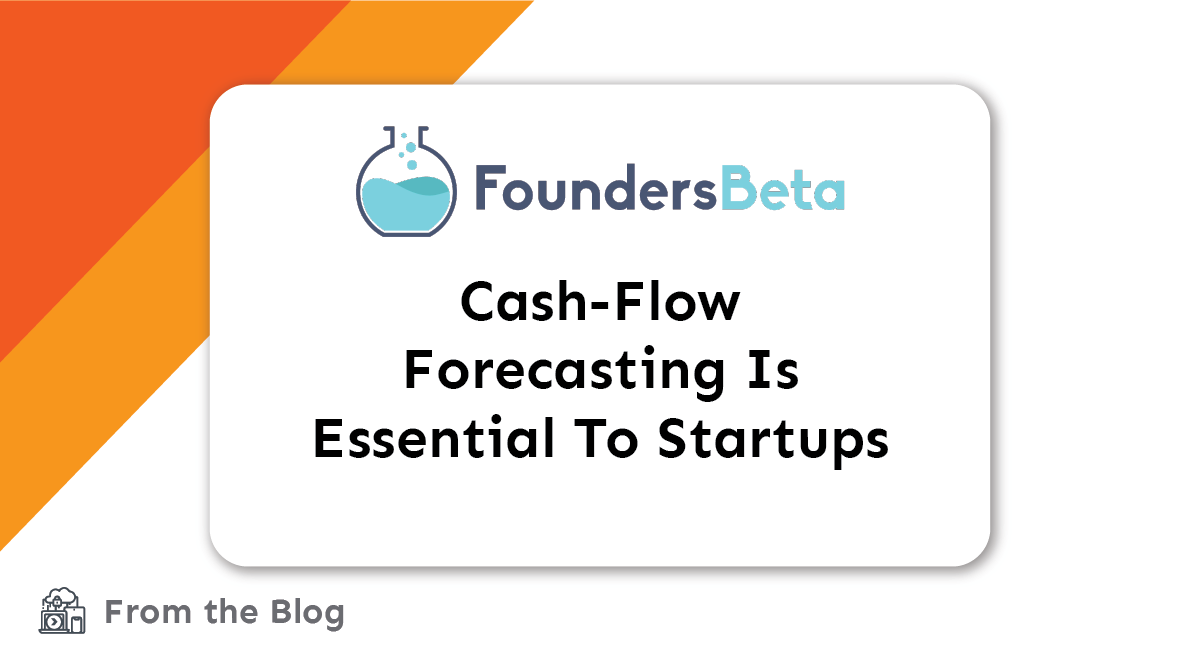Cash-Flow Forecasting Is Essential To Startups

Originally published on FoundersPress.
Rising inflation, high interest rates, labor shortages, ongoing supply-chain issues, and an impending recession have collectively forced global venture capital activities to slow. Investors are operating cautiously by tightening their purse strings and executing due diligence with more focus.
As a start-up founder, proving you have a healthy cash-flow can make your enterprise more attractive to investors. Take it from a serial entrepreneur who’s founded a slew of successful businesses. In my experience, founders can often be short-sighted and preoccupied with putting out daily fires to meet everyday obligations. They fail to sufficiently sketch out a bigger, broader picture that projects into the future and helps them grow and scale for long-term success.
A critical piece of future stability and success is cash-flow forecasting which predicts money inflows and outflows based on historical data over short- and long-term periods. Cash-flow forecasting can approximate long-term projections, identify cash-flow gaps, and plan for different overheads like wages, payroll taxes, and loan repayments.
Many small enterprises are still heavily reliant on their accountants to whip up cash-flow predictions via spreadsheets. However, manually creating a cash-flow forecast from scratch that reconciles all the nuances and variables affecting your business can be time-consuming and error-prone. Some entrepreneurs access basic forecasting tools through existing functions within their accounting software, like QuickBooks and Xero, but neither offers comprehensive sensitivity analysis for complicated, customizable scenario planning.
You likely have a good estimate of how much you’ll earn monthly. But what if revenue suddenly dips? Do you release employees or take on more debt? What will be the outcome of either action? An increase in production costs or have you just put yourself in a position to default? How do you forge ahead?
An automated cash-flow predictive tool with agile variable adjustments can take you from crunching numbers for eight hours to processing results in eight minutes. Here are some what-if scenarios founders can prepare for with cash-flow forecasting:
Hiring. We’re currently experiencing a challenging hiring market, with many employers and potential employees engaged in competitive, late-stage salary negotiations. Can you afford a high-value, in-demand candidate eyeing the top of your salary range? Or should you devote another two weeks fielding candidates that you can afford but aren’t dream hires? Maybe your ideal candidate costs more, but their expertise increases your sales by 10%. Maybe your backup costs less upfront, but their inexperience and lack of training impede your growth and translate to lost revenue. With the right forecasting tool, you can test out the two scenarios to see what it’ll cost and what makes better sense for you in the long run.
Raising capital. A cash-flow forecast can prove a founder’s legitimacy and planning acumen when talking to investors, venture capitalists, or banks to raise money. Predictive tools with scenario planning can draw distinct visual comparisons of how your start-up could benefit if it had a capital injection of $500,000 versus $300,000 versus $150,000 — or none at all. Including these forecasts in your pitch deck and business plan can show you’re serious about your start-up’s future. It’s also a step forward in proving that you’re a forward-thinking founder who’s engaged in the practicals of your company’s future, with your feet on the ground rather than your head in the clouds.
Breaking even. New companies can take years to break even, especially ones that require a lot of capital to get off the ground. Cash-flow forecasting can determine how much of a cash reserve you’ll need to get through this critical time to cover costs and expenses, sales drops, and generally protect yourself from internal and external volatility. Forecasting tools can also generate different scenarios — from best- to worst-case — for when you might break even. You can use the forecast to inform Plan Bs and Cs to secure a loan or line of credit or pursue capital investment (which you can also test for.)
Ultimately, a lot goes into starting and growing a successful business. Cash-flow forecasting is just one piece — but it’s especially essential in today’s volatile economic climate. Setting up a cash-flow predictive tool can swerve or mitigate some of life’s uncertainties and give your start-up the edge it needs to get to the next level.
Originally published on FoundersPress.


